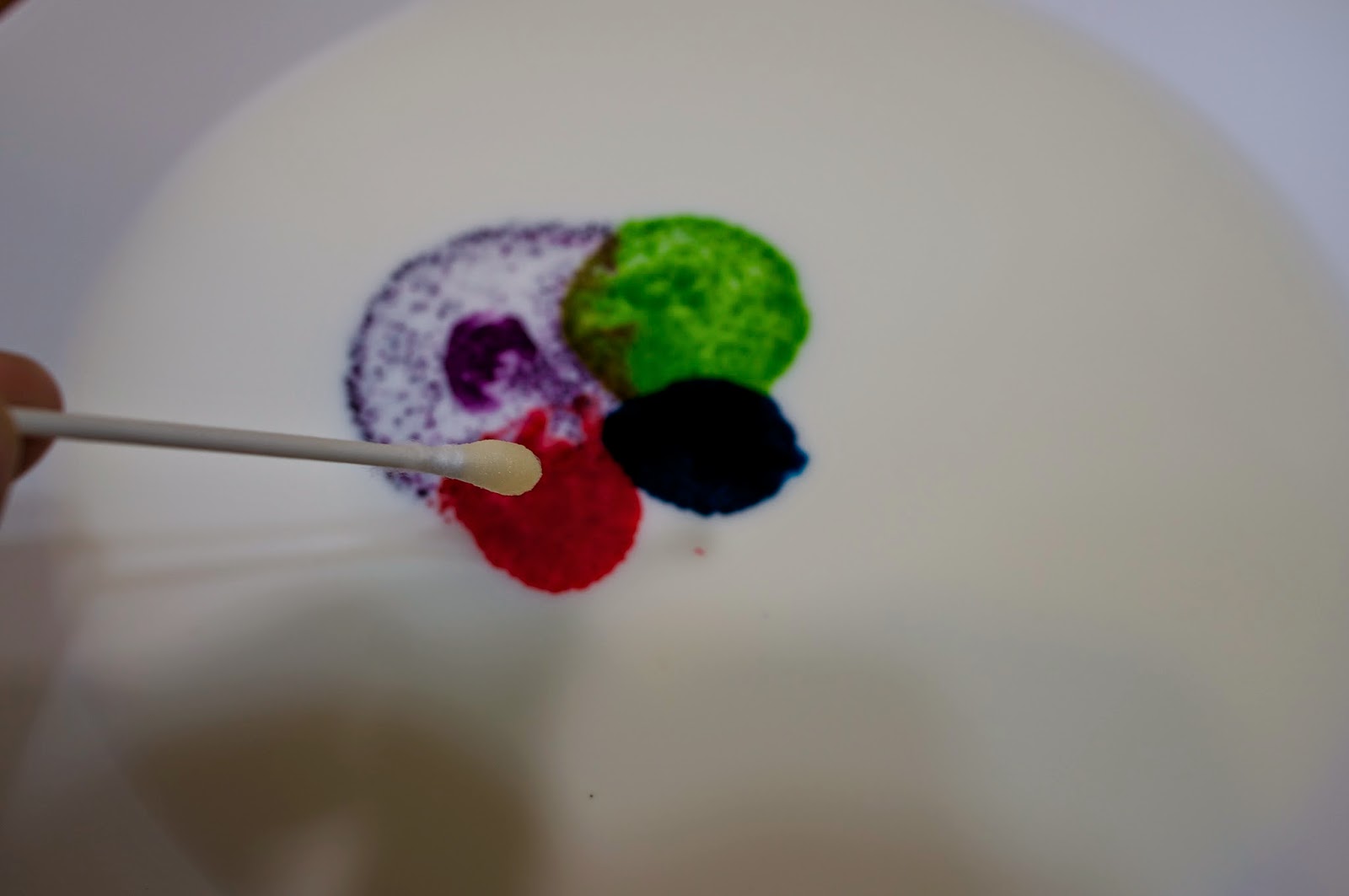Watch This Video!
Here you can see this awesome reaction happen right before your eyes!
What You'll Need
The first thing you'll need is some milk. I've found that whole milk works best, but you can use any kind.
Food coloring will allow you to see what is actually happening and create beautiful swirls and patterns. Any kind, color or amount will work. Have fun experimenting!
To hold the milk, use a shallow bowl or a plate with raised edges.
Regular old dish soap is the way to go.
Finally some Q-tips to apply the soap with.
Add the Milk
You won't need much at all. Just a thin layer of milk will do. Because so little milk is needed I poured mine into a plate with raised edges instead of a much deeper bowl.
Prepare Some Soap
Pour some dish soap into a mug, glass or cup. As with the milk, you won't be needing much.
Add Some Color
Now you can get down to the fun stuff! I started by adding four or five drops of purple, red, green and blue in the center of the plate. But as I stated in a previous step: you can use any colors you'd like. Have fun placing different numbers of drops in different areas of the plate to see what will happen.
Watch the Science Come to Life
How the Reaction Works
Milk is actually mostly water but it is also made up of vitamins, minerals, proteins, and tiny droplets of fat suspended in solution. Fats and proteins are sensitive to changes in the surrounding solution (the milk).
The secret of the bursting colors is the chemistry of that tiny drop of soap. Dish soap, because of its bipolar characteristics (nonpolar on one end and polar on the other), weakens the chemical bonds that hold the proteins and fats in solution. The soap's polar, or hydrophilic (water-loving), end dissolves in water, and its hydrophobic (water-fearing) end attaches to a fat globule in the milk. This is when the fun begins. The molecules of fat bend, roll, twist, and contort in all directions as the soap molecules race around to join up with the fat molecules. During all of this fat molecule gymnastics, the food coloring molecules are bumped and shoved everywhere, providing an easy way to observe all the invisible activity. As the soap becomes evenly mixed with the milk, the action slows down and eventually stops. Try adding another drop of soap to see if there's any more movement. If so, you discovered there are still more fat molecules that haven't found a partner at the big color dance. Add another drop of soap to start the process again.
Credit for this explanation goes to: Steve Spangler Science
Have Fun!
Here are some pictures I took while playing around with this. It really is a lot of fun, even if you're an adult.
I hope you guys enjoyed this article. If you know of other fun household science or art experiments please leave them in the comments. I'd love to hear them and I'm sure other readers will too.
Have a great day!


























